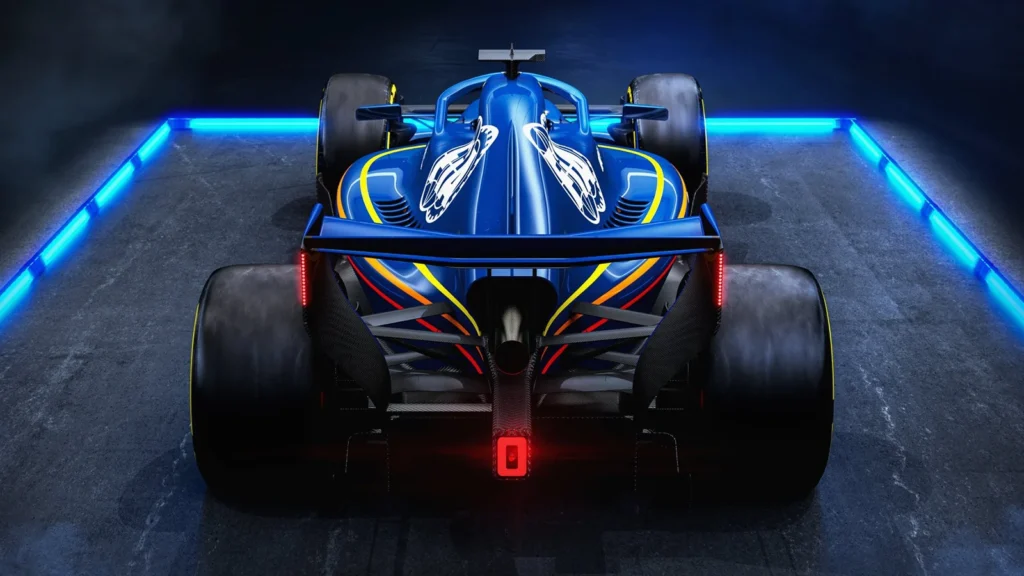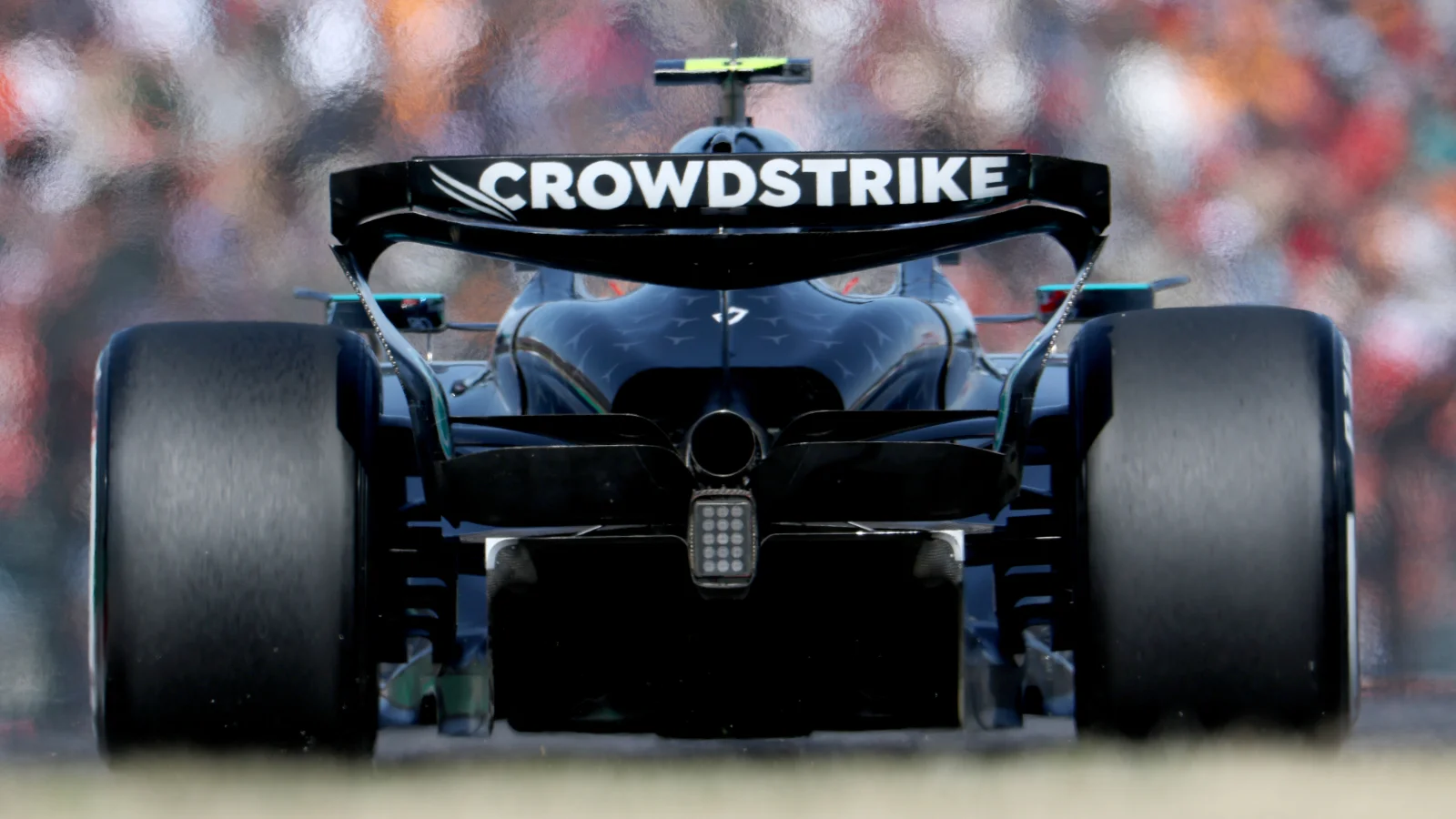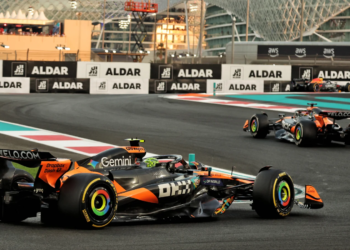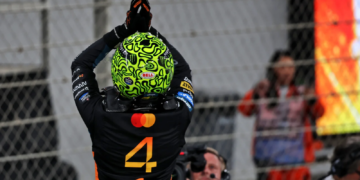Mercedes Chief Communications Officer Bradley Lord has named the biggest “challenge” the team is gearing up to face with the 2026 Formula 1 engine regulations.
The latest power unit rule-set is set to completely overhaul the engine formula – with the removal of the MGU-H and a 50-50 hybrid propulsion system.
Naturally, one of the biggest factors in deciding which engine manufacturer has the legs over its rivals is the reliability and performance it can derive from its power unit.
In the past, this has boiled down to how quickly a team can extract data and convert it into solutions.
For Mercedes, who are tipped to lead the engine race from the start, Lord believes that its position as an engine supplier in the paddock is one of the biggest advantages.
“I think supplying multiple teams as a power unit manufacturer, the reason you do it is because it gives you exactly that [an advantage], particularly on reliability and proving our technology,” he said.
This season, the German marque supplies engines to Williams, Aston Martin and reigning Constructors’ champions McLaren.
From 2026 onwards, Aston Martin will be replaced by Alpine. And while having three teams feeding back essential data to boost Mercedes’ engine development, Lord also envisaged a logistical hurdle that could pose a “challenge”.
“There’s an advantage to that. It also comes at a… cost is the wrong word, but it brings with it the challenge of needing to have more parts ready, more power units ready, more products ready sooner, in order to enable those four teams to go testing and go racing and things like that,” he continued.
“So it’s not without challenge, but one of the upsides is certainly that you get more extensive prove-out mileage, and you’re learning at a faster rate thanks to the mileage that all eight power units will be doing at the first race weekend.
“That will certainly be positive. Equally, if you find challenges, you have eight sets of solutions that you need to deliver, not just two or four or six.
“So there are sort of upsides and downsides to it, but we believe that the upside of that learning outweighs the downsides.”

What Mercedes expects with 2026 regulations
The 50-50 split between the internal cumbstion unit and electric output has raised a few concerns in the paddock about the drivability of the 2026 cars.
Charles Leclerc and Lance Stroll have been vocal about how they feel that the technical regulations will impede drivers in fast, flowing circuits like Suzuka or Spa Francorchamps.
However, Lord relayed the initial feelings the team’s reserve driver Valtteri Bottas had to deliver after testing a prototype of the 2026 F1 car on the simulator.
“He said that, by the time we get to the start of next season, actually, it won’t be the same as it has been this year, but we’ll be in a situation where it will be something that feels very familiar,” revealed Lord.
“The focus is on how to extract more performance. How can we overtake here? How can we optimise lap time rather than anything else?
“So I think we will all be going on a journey as stakeholders in and fans of Formula 1, to understand the racing and to explain that to the fans as well, what’s changing and why it’s changing.
“But Melbourne 2026, it will be Formula 1 as we know it, and when the lights go out, it will be racing as we know it, and we will see people fighting tooth and nail to win the grand prix.”
READ MORE – FIA keen to avoid ‘overburdening’ F1 drivers with 2026 regulations










Discussion about this post